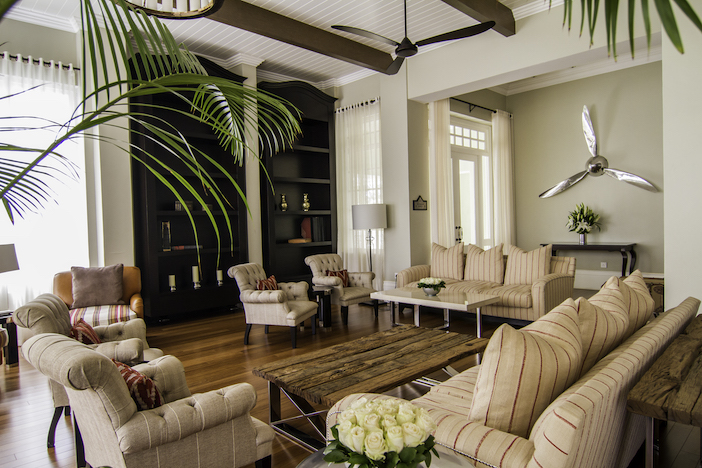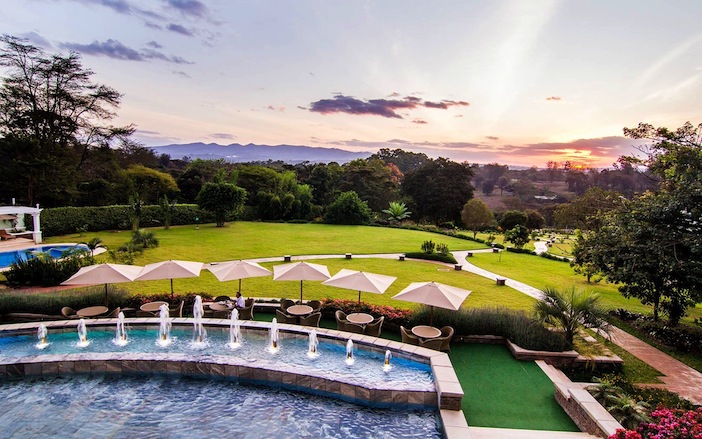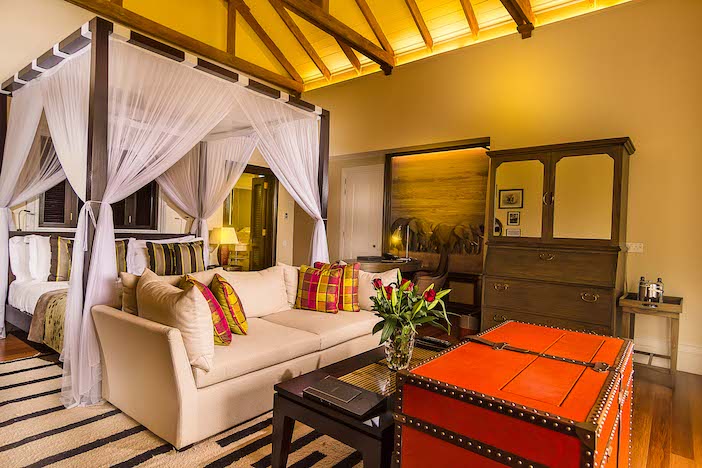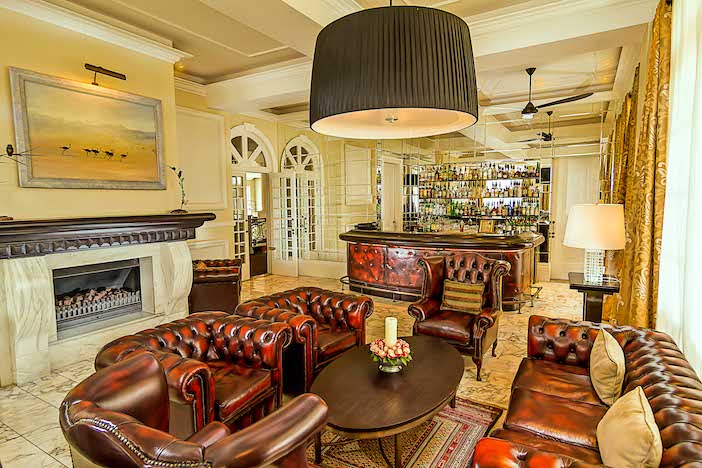As a seasoned safari-goer, I’ve got a few tips up my khaki-clad sleeve. To beat the crowds and bag lower prices, visit in ‘green’ season (in Kenya, that’s March to May), when landscapes are at their lushest and populated by the calves of many prey species as well as migratory birds such as the brilliantly turquoise European Roller. If bushwalks are offered in the reserve you’re visiting, seize the chance to hop out of the 4X4; there’s something humbling and primal about exploring the wilderness on two legs, appreciating details normally missed on game drives, whether it’s paw prints, medicinal plants or the ‘tiny five’. As for packing, bring warm layers (before sunrise, the savannah is surprisingly chilly) and earplugs (tented camps and star beds may be romantic, but the hoots, howls and cackles coming from unseen creatures aren’t such a soothing lullaby).

One more thing: be sure to bookend your trip with a luxurious layover. Because although safaris are the stuff of David Attenborough-fuelled dreams, all those early starts, exhilarating animal encounters and bone-juddering journeys call for travellers to arrive full of beans. Which is why, upon landing into Jomo Kenyatta International Airport this spring, not-so-fresh off the eight-hour flight from London, Doctor G and I first decamped to Hemingways Nairobi.
A driver is holding up a board bearing our names, a welcome sight in the hot, busy arrivals hall. Forty minutes later, we’re pulling up at a peppermint-hued mansion in the tranquil suburb of Karen, sinking into wicker chairs at reception and sipping refreshing glasses of mango juice. Ceiling fans spin gently from the lofty ceilings and staff’s footsteps tap over the marble floors, setting the slow, restorative pace for this urban retreat.

Its 10-acre grounds are particularly lovely: a long, manicured lawn unfurling towards the Ngong Hills, bird of paradise plants and hibiscus flame-bright beneath the palms Each of the 45 suites have a private terrace overlooking this leafy oasis. On the other side of the grounds, discreetly tucked behind the foliage, there’s a swimming pool and small spa, where treatments make use of locally sourced ingredients (think: Kenyan coffee body scrub, Madagascan Ylang Ylang or Citronella essential oils) to bust the jetlag.
With its breezy verandas, sweeping double staircase and elegant white columns, Hemingways has the look of a well-established grand dame, so I’m surprised to discover the hotel’s little more than a decade old. Style cues are taken from the 1930s, when its namesake author arrived in East Africa and went on to pen short stories The Snows of Kilimanjaro and The Short Happy Life of Francis Macomber, as well as the memoir Green Hills of Africa, inspired by his travels. “All I wanted to do was get back to Africa,” he writes in the latter. “We had not left it, yet, but when I would wake in the night I would lie, listening, homesick for it already.”

This book is largely a love letter to big game hunting; thankfully, times have changed and most of today’s tourists are instead more interested in peacefully observing and conserving wildlife with visits to the nearby Giraffe Centre, Wildlife Trust elephant orphanage and Nairobi National Park. Muslin-swathed four-poster beds, black-and-white photographs and a refined taupe colour scheme continue the colonial-era aesthetic in the hotel’s 45 suites. Even televisions are cannily concealed within antique-style leather travel trunks.
Another (in my opinion, less objectionable) hobby of Ernest Hemingway’s was, of course, cocktail drinking. Dressed in fresh linens unpacked and pressed by your suite’s butler, the bar’s brown leather Chesterfields beckon for an aperitif. The mojito was famously one of his go-to tipples, but for me there’s nothing more tantalising than his description of a martini in A Farewell to Arms: “I had never tasted anything so cool and clean. They made me feel civilized.”

Onto dinner, the Brasserie’s menu is as well travelled as Hemingway himself, serving everything from crab tempura and tofu ramen to Mediterranean mezze platers, bouillabaisse and risotto. I swiftly move past the mention of Norwegian smoked salmon (luxury hospitality’s obsession with imported salmon is something of a personal bugbear; need we really eat this in sub-Saharan Africa?) and camembert in favour of a local speciality: deep-fried Lake Ngege tilapia served with warm tomato-coriander salsa, kale and ugali (cornmeal). For meat eaters, steaks cooked in the Josper oven are stars of the show.
The property is part of Kenyan boutique hotel group Hemingways Collection, counting Indian Ocean coastal retreat Watamu and Masai Mara’s Ol Seki camp as siblings. Whether you’re off to one of these next, or like us, heading up to the semi-arid northern highlands of Samburu, it’s only a 20-minute drive from Hemingways to Wilson Airport, from which most domestic flights operate. We hop onto the 12-seater Cessna Caravan early the next morning suitably recharged for our Kenyan adventure, as bright-eyed and bushy-tailed as the creatures we’d soon be spotting on the savannah.
Double Deluxe Suites from £653 per night. For more information, and for bookings, please visit www.hemingways-collection.com.




